Uncover amazing Welsh Winter traditions
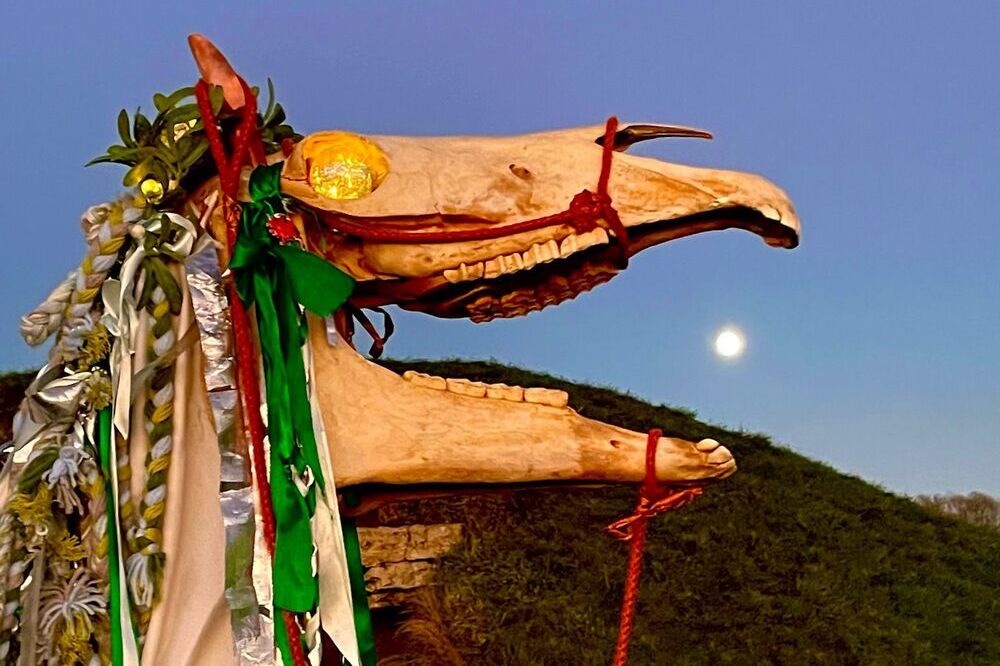
Wales boasts a rich tapestry of Christmas and winter traditions that reflect our cultural heritage and communal spirit. From the harmonious strains of Plygain singing to the spirited Nos Galan Road Races, these customs infuse the festive season with unique Welsh charm.
Plygain
Plygain is a traditional Welsh Christmas service originally held in churches between 3 a.m. and 6 a.m. on Christmas morning. According to the Geiriadur Prifysgol Cymru, the word plygain comes from the Latin pullicantiō which means “the crowing of the rooster,” which, as we know, is very early in the morning!
Congregants would gather to sing carols, often unaccompanied and in intricate harmonies. The service began with a reading or sermon, after which individuals or groups came forward to perform their chosen carols.
Historically, the church would be illuminated by candles brought by attendees, creating a warm and inviting atmosphere.
In this video, Arfon Gwilym explains that the original Plygain was strictly an early morning carol service held exclusively on Christmas morning.
Over time, however, Plygain services began to be held in the evenings and spread out over a six-week period. This adaptation saved the tradition and provided a platform to revive Welsh carols that had been sung less frequently. This is particularly beneficial for preserving songs deeply rooted in Welsh heritage.
Some beloved hymns often sung at Plygain services include:
- “Iesu Yw” – A heartfelt hymn celebrating Christ as the Redeemer.
- “O Deuwch Ffyddloniaid” – The Welsh rendition of “O Come All Ye Faithful.”
- “Cluwch Lu’r Nef” – A stirring call to hear the heavenly host.
- “Ar Gyfer Heddiw’r Bore” – A joyful carol marking the sacredness of Christmas morning.
This blend of tradition, adaptation, and revival keeps the spirit of Welsh caroling alive, allowing communities to cherish their cultural roots through the beauty of harmony and song.
Here’s Gethin Griffiths, Elidyr Glyn, and Gwilym Bowen Rhys singing Teg Wawriodd:
Noson Gyflaith: Toffee-Making Evenings
One of the sweetest traditions in Wales during Christmas is Tynnu Cyfaith, the practice of pulling toffee.
This method involves cooking toffee to a hard stage, then pulling it until it’s glossy and light.
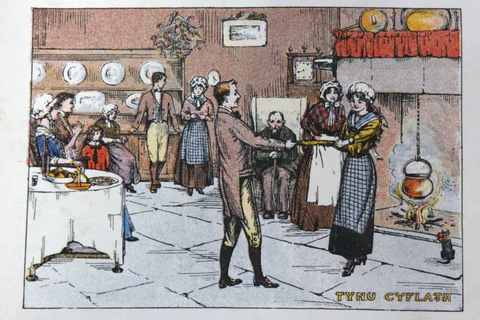
This treat is not only delicious but also provides a fun family activity during the festive season and some still keep the tradition alive today.
The ingredients (sugar, butter, and water) had to be boiled, and once ready, the mixture would be poured onto a greased slate or stone.
Then came the fun and challenge, as everyone greased their hands and tried to pull and twist the taffy until it was the right colour and shape. This was, of course, a matter of skill, and there was plenty of joking around as well.
Unsurprisingly, this tradition inspired poetry, as seen in a Christmas poem from the late Victorian era (1890) by Trebor Mai of the Conwy Valley, which reflects the spirit of the time:
Y Gwyliau sy’n dod a’i gelyn glas,
A’i gyflaith, a’i bwdin, a’i ŵyddau bras
Daw’r plant i enyn chwerthiniad iach
I’r aelwyd gynes yn Nghymru bach
– Trebor Mai, quoted from y Cymro, 18 September 1890
The holidays bring their bright foe,
With taffy, pudding, and fat geese in tow,
The children arrive with healthy cheer,
To the warm hearth in little Wales here.
(English Translation)
Y Fari Lwyd
Y Fari Lwyd, or The Grey Mare, is a centuries-old Welsh tradition celebrated during the Christmas and New Year period, typically between late December and mid-January.
This haunting yet joyous custom features a troupe guiding the Mari – a stark white horse’s skull adorned with ribbons and draped in a flowing white gown – through darkened streets to the inviting lights of festive gatherings.
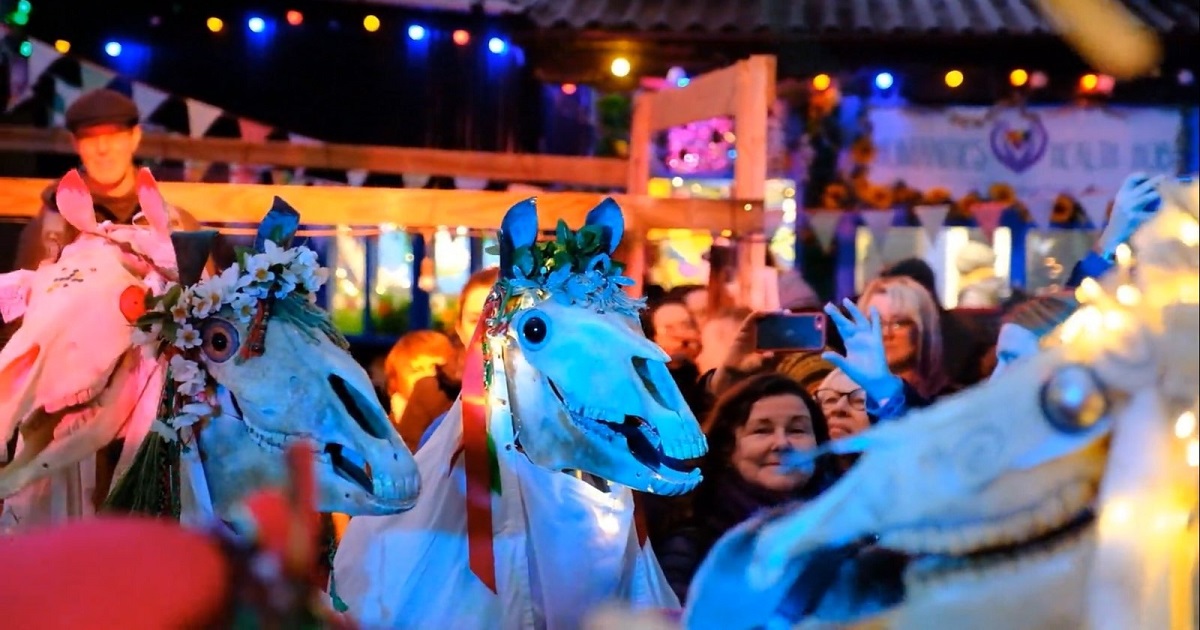
Her snapping jaws challenge the poetic prowess of those she encounters, rewarding only the most skillful with her admiration.
The troupe, often seen as figures from the Otherworld, represents the spirits of the dead leading the Mari from the realm of shadows into the warmth of celebration. The Mari Lwyd serves as a potent symbol of winter’s purpose, embodying the cyclical mysteries of life, death, and rebirth.
At the heart of this tradition is the song “Wel Dyma Ni’n Dwad”, which announces the group’s arrival and their wish to join in merriment, food, and drink. Below are the lyrics:
Wel dyma ni’n dwad
Gyfeillion diniwad
I ofyn am gennad i ganu.
(Ateb oddi mewn)
O, cerwch ar gered,
Mae’ch ffordd yn agored,
Mae’r ffordd yn agored – nos heno.
(English Translation)
(From outside)
Well, here we come
Innocent friends
To ask may we have leave to sing.
(Answer from inside)
Oh, go walk,
Your way is open,
Your way is open – tonight.
Keeping the Tradition Alive
Y Fari Lwyd continues to thrive across Wales and beyond.
In Beaumaris last year, over 250 people celebrated Hen Galan (the Welsh Old New Year, traditionally marked on January 13th), raising £197.45 for the Anglesey Food Bank.
The tradition has also spread globally, with celebrations in places like New Paltz, NY, and Highland, NY, showcasing Welsh culture to new audiences.
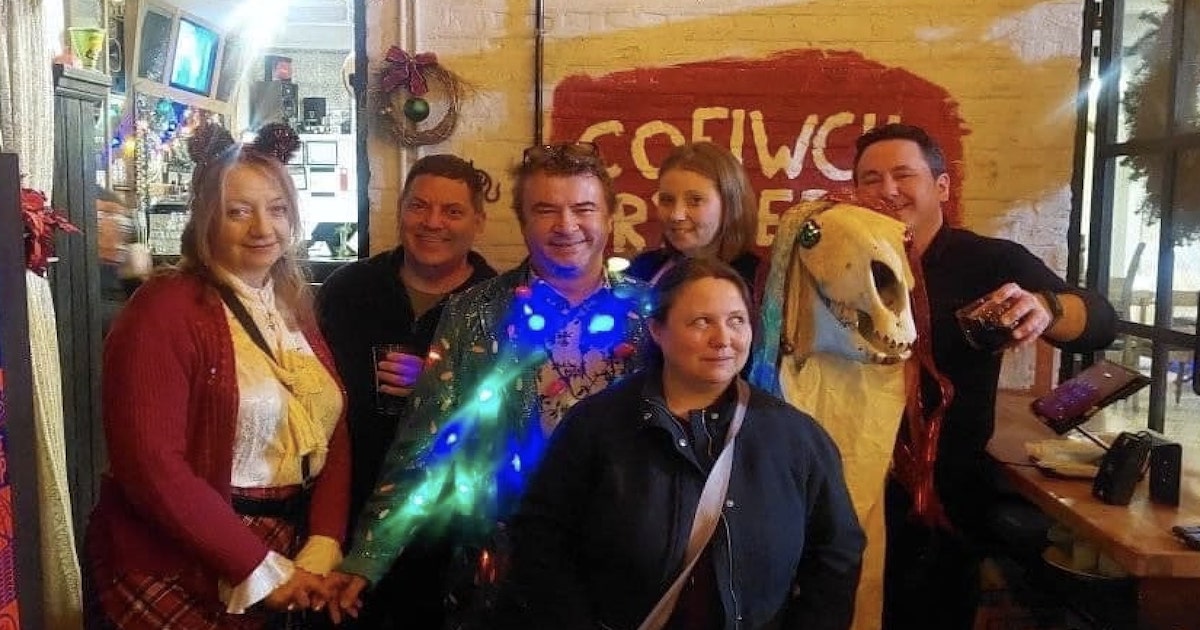
Similar to wassailing, which involves singing carols and spreading cheer, Y Fari Lwyd emphasizes community spirit and blessings for the coming year. Its revival and global reach ensure this uniquely Welsh custom continues to bring joy and connection, blending heritage with festive cheer.
Calennig: New Year’s Gifts
On New Year’s Day in Wales, the tradition of collecting Calennig brought joy and a sense of community to villages and towns.
Children would form groups and go from house to house, bearing good wishes for the health and prosperity of the family during the year to come.
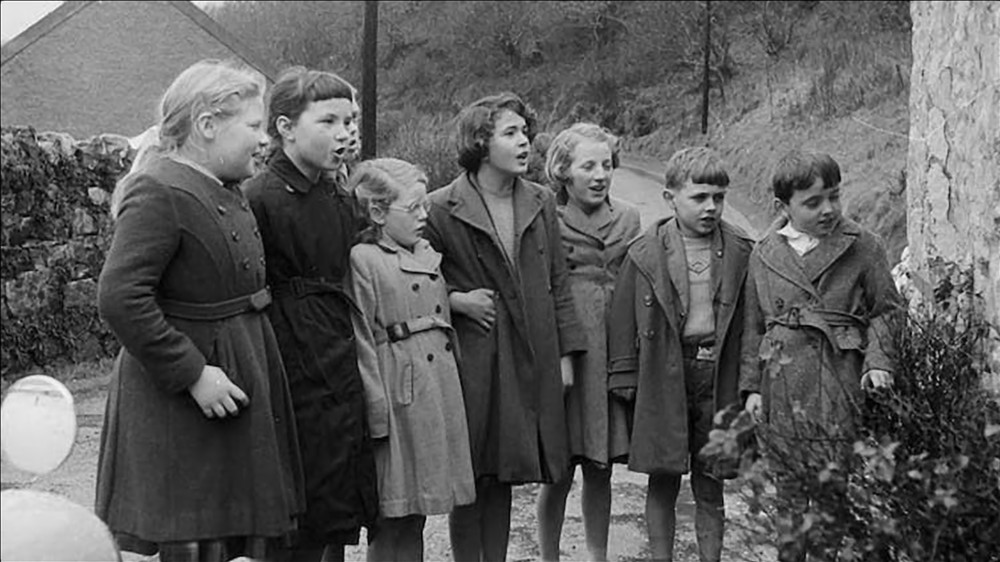
This was symbolised by the skewered apples, stuck with corn and sprigs of evergreen, which they carried in their hands. Verses were sung at the door of the house, and they would receive small gifts of food or money for their troubles.
Latterly, the carrying of the apple has been discontinued, and only the recitation of a few versess and the collecting of pennies mark the custom in those districts where it has survived.
The Perllan and its symbolism
At the heart of this tradition was the perllan, a simple yet richly symbolic creation.
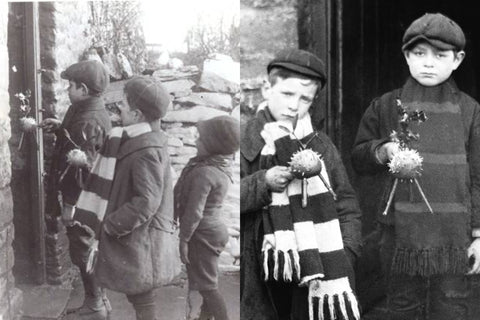
The apple represented health, vitality, and the promise of abundance for the coming year. It was decorated with the following elements, each carrying its own meaning:
Twigs or Skewers: Three wooden sticks were inserted into the apple, symbolizing stability and balance for the year ahead. They often formed a tripod-like base, allowing the apple to stand upright.
Holly Leaves or Sprigs of Greenery: Holly, a plant long associated with protection and good fortune, was added to ward off evil spirits and bring blessings to the household. Greenery also symbolized growth and renewal.
Cloves: These aromatic spices were sometimes pressed into the apple as a fragrant decoration, symbolizing warmth, prosperity, and the richness of life.
Ribbons: Brightly colored ribbons were tied around the apple or twigs, adding a festive touch that reflected joy and celebration.
Tradition in action
Children would carry their perllan while singing verses or chants. A common Calennig verse went something like this:
Blwyddyn newydd dda i chi,
Ac i bawb sydd yn y tŷ.
Dyma yw dymuniad ni,
Blwyddyn newydd dda i chi.
(English translation)
A Happy New Year to you,
And to everyone in the house.
This is our great wish,
A Happy New Year to you.
In return, the household would reward the children with small gifts, often coins or festive treats. This exchange reinforced the community’s connection, as the children’s blessings were reciprocated with tokens of gratitude.
A timeless reminder
Though the practice of Calennig has waned in modern times, its symbolic elements and communal spirit remain a poignant reminder of Wales’s rich cultural heritage. The tradition captures the essence of starting the new year with generosity, gratitude, and shared joy, ensuring that good fortune is spread among friends and neighbors alike.
Nos Galan Races: Honouring a Welsh Legend
The Nos Galan Races, held every New Year’s Eve in Mountain Ash, are a celebration of Guto Nyth Brân, one of Wales’s most famous folk heroes.
Guto, born Griffith Morgan in Llwyncelyn near Porth, became legendary for his extraordinary running ability.
Folklore tells of his incredible feats, such as catching a bird in flight and running over seven miles to Pontypridd before the kettle boiled.
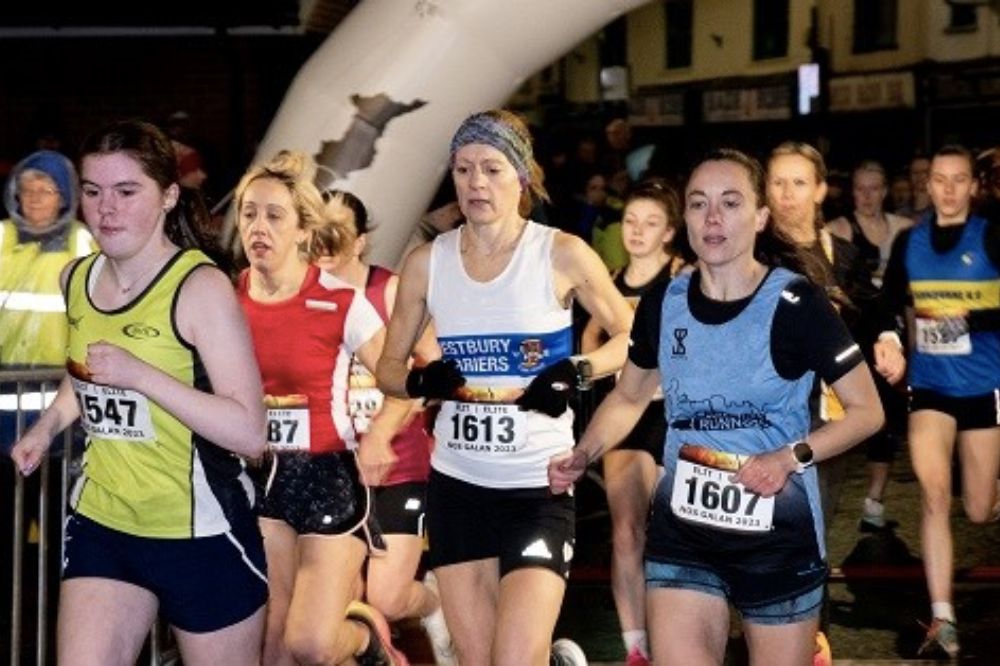
One of the most famous stories about Guto is his race against a horse. Despite the grueling course, Guto emerged victorious, solidifying his reputation. However, his final race ended in tragedy.
After being persuaded to come out of retirement, Guto collapsed and died in the arms of his sweetheart, Siân o’r Siop, after winning the race. His grave in Llanwynno Churchyard remains a symbol of his legacy.
Today, the Nos Galan Races feature events for all ages and abilities, from fun runs to competitive challenges. The lighting of the Nos Galan Beacon signals the start of the evening’s activities.
Tony Simmons holds the record for the four-mile race, set in 1971 at 17 minutes 41 seconds, a time that has yet to be beaten. The 100-yard sprint record, set by Nigel Walker in 1988, also still stands.
A unique feature of the races is the annual mystery runner, whose identity is revealed only on the night. Previous mystery runners have included athletes like Lillian Board and Kirsty Wade, as well as rugby stars Jamie Roberts and James Hook.
The Nos Galan Races are a vibrant mix of sport, folklore, and community spirit, bringing Guto Nyth Brân’s story to life and ensuring his legend continues to inspire new generations.
Curo celyn / Holming / Holly beating – St. Stephens Day (Boxing Day)
On December 26th, Gŵyl San Steffan (St. Stephen’s Day) was marked in Wales with unique customs, some of which were both playful and symbolic.
One such tradition was “holly-beating,” or holming, where young men would gently strike the arms of young women with holly branches. This act, though mischievous, was believed to bring good luck for the coming year.
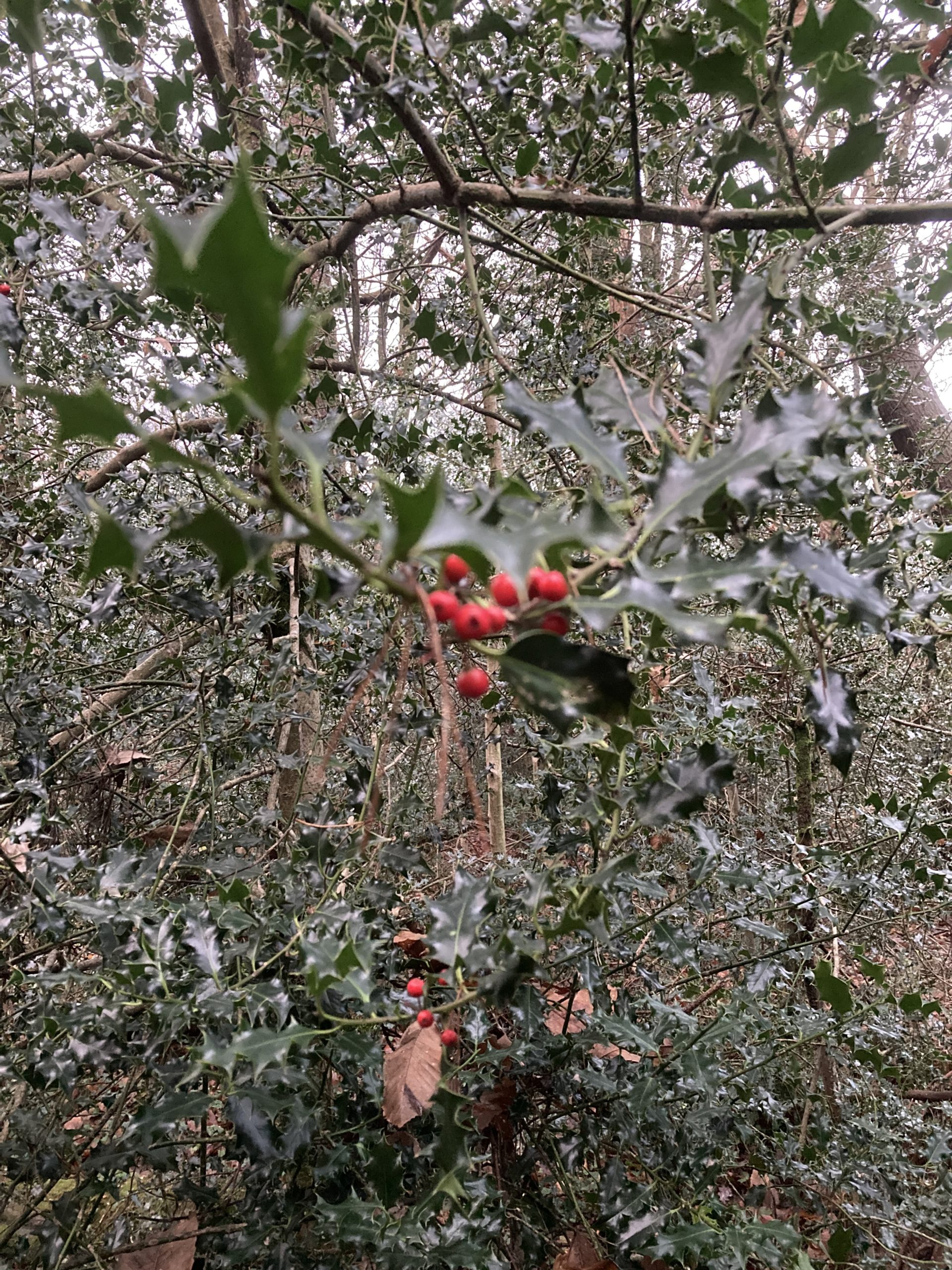
In some regions, holming took a different turn, involving the last person to get out of bed on St. Stephen’s morning. They would receive a light “beating” with holly branches as a humorous reminder to rise early and be industrious. This playful tradition reflected the spirit of the season, mixing lighthearted fun with cultural symbolism.
Another aspect of Gŵyl San Steffan tied into the agricultural traditions of Wales. It was a day to honor horses, and in some parts of the country, horses were bled to improve their health – a practice rooted in ancient superstitions about ensuring the vitality of livestock. While this custom has long since disappeared, it highlights the connection between Welsh celebrations and the rhythms of rural life.
Hela’r dryw / Hunting the wren
The hunting of the wren, which usually took place between St. Stephens Day and the Twelfth night, is prominent in both Welsh and Irish history. It was a custom which was thought to bring good luck and an opportunity to start the new year with a clean slate.
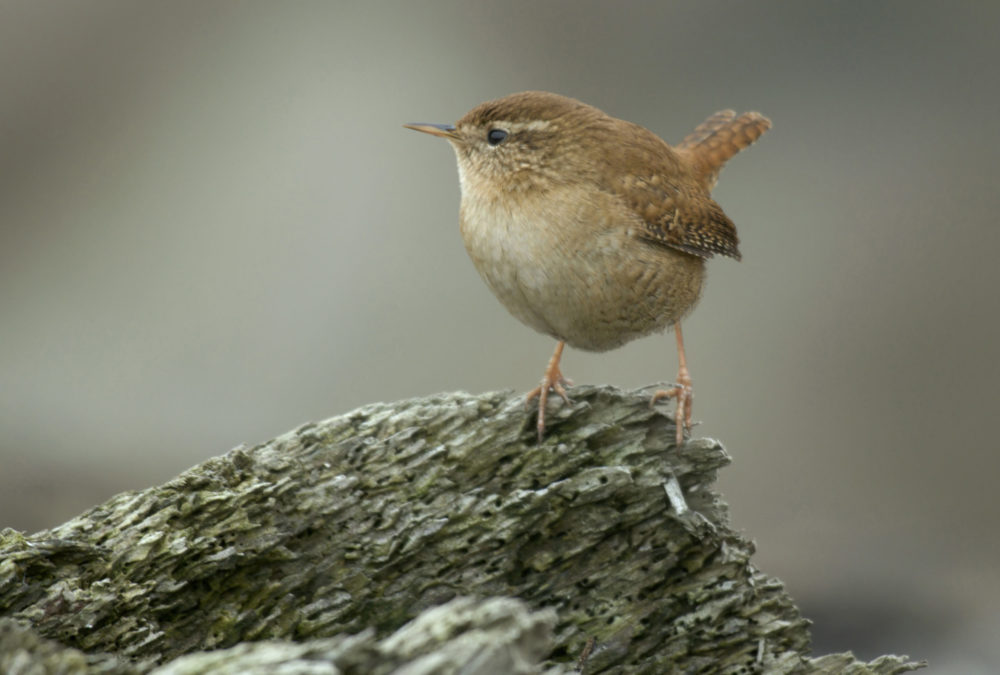
‘Hunting the wren’ involved a party of young men going out to catch a wren, the smallest of all the birds.
Sometimes it would be killed, but sometimes it would be put alive in a little cage adorned with ribbons which would be carried around villages from door-to-door with the group singing songs, praising the wren as the ‘King of Birds’ and asking for gifts of food or money in exchange for seeing the captured wren.

By modern day standards, this custom seems heartless and odd to us, but the use of a bird as a symbol of luck has long held a place in Welsh history.
In the Mabinogion (the earliest Welsh stories, widely considered to have been compiled in Middle Welsh in the 11th–14th centuries), the figure Lleu Llaw Gyffes is named after having killed a wren.
Welsh wildlife now has legal protection and this custom no longer continues in Wales.
Fernhill’s Hela’r Dryw beautifully captures the haunting spirit and rich heritage of this ancient Welsh tradition.
Read more fascinating articles from Welsh Words here.
Support our Nation today
For the price of a cup of coffee a month you can help us create an independent, not-for-profit, national news service for the people of Wales, by the people of Wales.




